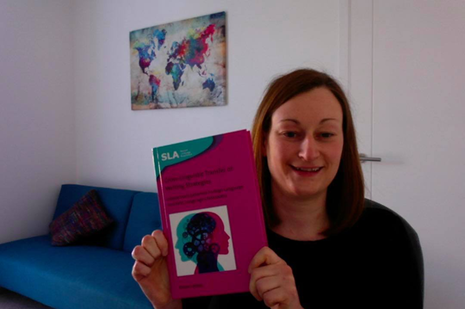Reflecting on the UK Language Curriculum: In Conversation with Dr Karen Forbes
Yan-Yi Lee discusses language education in UK secondary schools with Senior Lecturer Dr. Karen Forbes

Dr. Karen Forbes has two simple yet compelling messages for schools in the UK and beyond: the learning impact of strategy-based instruction is multi-dimensional, and education stands more powerful if we consider the unified goal of learning across subjects.
The powerful global status of English as a Lingua Franca, coupled with recent political developments such as the Trump presidency and Brexit, have brewed some misguided skepticism towards foreign language (FL) learning in much of the Anglophone world. Under the current climate, educators are often asked to revisit the meaning of foreign language teaching; some also proceed further to contemplate how its educational value extends beyond a mere impartation of new pronunciation, words, and grammar.
‘We highlight the social, cognitive, and economic benefits of speaking another language; we emphasise the importance of developing communication skills and intercultural competence. However, what if we could provide further evidence to demonstrate that the benefits and value of FL learning in schools can extend beyond the subject to other areas of the curriculum?’
These are the thoughts of Senior Lecturer Karen Forbes, eloquently communicated in her newest book Cross-Linguistic Transfer of Writing Strategies: Interactions between Foreign Language and First Language Classrooms. The book presents first-hand empirical evidence that captures, details, and examines the multi-directional cross-linguistic transfer of strategies in UK secondary schools. It advocates a much-needed cross-curricular approach to language teaching, one envisioned to stimulate deeper engagement with foreign language learning processes. Crucially, it encourages reflections on how those processes could apply back to the first language context.
“What if we could provide further evidence to demonstrate that the benefits and value of FL learning in schools can extend beyond the subject to other areas of the curriculum?”
As Dr. Forbes notes, much of the inspiration comes from her professional experience prior to teaching at Cambridge: ‘I remember when I was training to be a secondary school language teacher, and one of my good friends from home was an English teacher in secondary school … We used to have all these discussions and debates about whose role it was to teach language… in a sense, she very much saw herself as a literature teacher’.
Dr. Forbes observed how the first and foreign languages were often viewed as separate concepts, separate subjects, with separate goals... which brought forth the idea of whether schools could advance beyond those pre-established foundations:
‘We tend to approach language in a different way and I started to think we need to account for that, because if these teachers have very different views of language and what they’re doing, that’s probably going to influence the students. So I was looking at the students— how do they see these two contexts? Do they see potential for connections?’
Facing this broad question, Dr. Forbes turned to the field of language learner strategies— a scholarly area that lies in the intersection of applied linguistics and cognitive psychology. At its core, language learner strategies are actions applied consciously to achieve a learning goal, and its significance for educational success might have powerful implications for learning across contexts.
‘I’m looking at strategies as a way into this, because strategies are a lot less context-dependent, so you can use them for different tasks, for different levels of proficiency.’ Central to Dr. Forbes’ argument is that strategies— particularly metacognitive ones with which learners reflect on their own thinking— are empowering tools that scaffold student autonomy as well as their awareness of ‘processes’. In her book, Dr. Forbes lays out rich data to suggest how strategies, when taught systematically in the foreign language classroom, may transfer reversely to the first language context and even enrich students’ critical thinking of the first language.
While mainly featuring language education in UK secondary schools, the implications of this book go well beyond geographical and contextual borders. If we agree that knowledge and learning cannot be neatly cut into boxes, then the time is well ripe for educators across subjects to converse and collaborate.
 Features / Should I stay or should I go? Cambridge students and alumni reflect on how their memories stay with them15 December 2025
Features / Should I stay or should I go? Cambridge students and alumni reflect on how their memories stay with them15 December 2025 News / Cambridge study finds students learn better with notes than AI13 December 2025
News / Cambridge study finds students learn better with notes than AI13 December 2025 News / Dons warn PM about Vet School closure16 December 2025
News / Dons warn PM about Vet School closure16 December 2025 News / News In Brief: Michaelmas marriages, monogamous mammals, and messaging manipulation15 December 2025
News / News In Brief: Michaelmas marriages, monogamous mammals, and messaging manipulation15 December 2025 Comment / The magic of an eight-week term15 December 2025
Comment / The magic of an eight-week term15 December 2025









